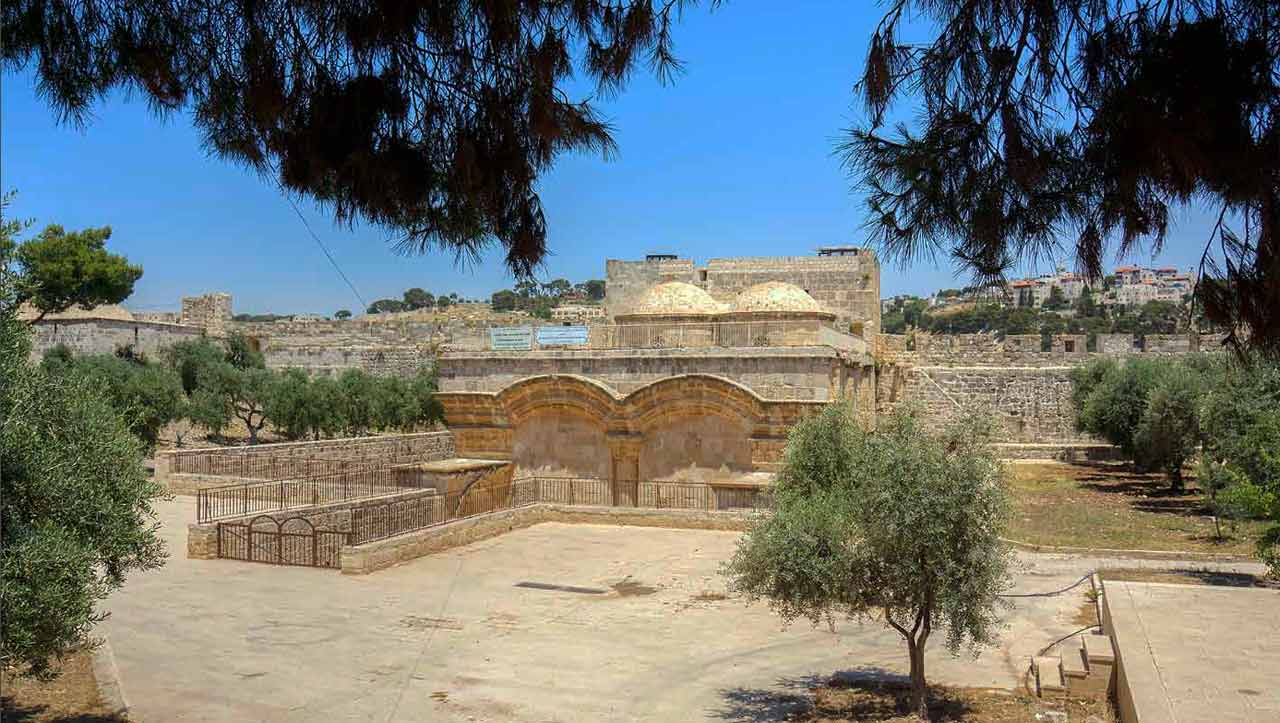The Golden Gate

THE GOLDEN GATE, also known as Bab al-Rahma, the Gate of Mercy, is located on the eastern wall of al-Aqsa Mosque. It contains two gates in its lower courtyard that originally led through the building and on through the east wall out to the Bab al-Rahma cemetery.
The first of these gates is also called Bab al-Rahma, and the second is Bab at-Tawba, the Gate of Repentance. The building that includes these two gates dates back to the Umayyad era. Throughout the early Islamic periods the ground floor was primarily used as a prayer hall, while during the Ottoman era it became a place of spiritual retreat. There is a long room with two domes above Bab ar-Rahma, where Imam Abu Hamid al-Ghazali, the12th century Islamic scholar, is thought to have written his famous Ihya’‘ulum al-din , the Revival of the Religious Sciences, within which is a section on the creed of Islam sometimes referred to as the Jerusalem Treatise.
The Golden Gate once provided the only access to the courtyards of al-Aqsa from the east, through its two high vaulted interior halls. The outer gates along the eastern wall, as well as the gates along the southern wall of al-Aqsa, have been sealed for centuries for security reasons; unlike the north and west perimeters of the mosque, bordered by private residences and public institutions, the eastern and southern walls of al-Aqsa are exposed and serve as the outside defensive walls of the Old City.
Ibn Kathir, in his famous commentary on the Qur’an, included reports of those who thought that the Gate of Mercy which opens onto the cemetery, and its east wall, were referred to in the following verse:
“…so a wall will be put up between them, with a gate therein.
Within it, will be mercy throughout,
Outside it, all will be doom.”
Qur’an 57:13
“…so a wall will be put up between them, with a gate therein.
Within it, will be mercy throughout,
Outside it, all will be doom.”
Qur’an 57:13